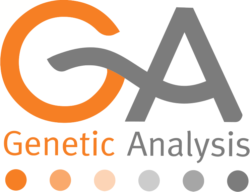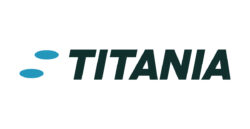Irisity AB (”Irisity” or ”the Company”) published its Q2 report for 2025 on the 15th of August 2025.
The following are key events that we have chosen to highlight in the report:
- Net Sales Amounted to SEK 17.9m (25.8) – Decline of -31% Y-Y
- Invoicing Down Sharply Y-Y Due to Tough Comparables
- MRR Declines Sequentially – Regulatory Tailwinds Expected to Drive Gradual Recovery
- OPEX Reduction Efforts Underway
- Strained Liquidity Suggests Additional Need for Capital
Q2 Sales Challenges Persist, but Positive Signs Emerging during H2-25
Reported net sales for the second quarter of fiscal year 2025 amounted to SEK 17.9m (25.8), equivalent to a decline of approx. -31% Y-Y. This trend is consistent with the previous quarter and is primarily attributable to delays in large-scale international projects, notably within city and security infrastructure, as a result of ongoing global trade tensions and a weakening USD.
Despite these near-term headwinds, management notes a clear uptick in commercial activity from both end-customers and partners, resulting in a healthy pipeline of new leads and opportunities. Notably, Q2-25 saw the addition of several key customers, including a large state government project in Mexico valued at roughly USD 0.3m (~SEK 2.7m). This bodes well for H2-25; however, global tensions and uncertainty remain, potentially causing further delays to larger-scale projects as customers await a more stable macroeconomic environment.
A further highlight was the signing of a new OEM partner for the Kingdom of Saudi Arabia. This agreement not only secures Irisity a local presence and a Saudi-based engineering team but also grants access to well-established partnerships in the region. The OEM will work closely with the Budapest R&D team to localize the Irisity Professional product for the Saudi market. The agreement includes an annual revenue commitment and a co-investment in engineering, a structure Analyst Group views positively as it enhances both market access and product adaptation potential.
Looking ahead, Q3-25 will be challenging from a comparative standpoint, given the revenue of SEK 30.3m reported in Q3-24. We therefore expect a Y-Y decline in the upcoming quarter, in line with the trend observed in H1-25. However, into Q4-25, we forecast a rebound relative to an easier comparable period following the revised revenue recognition last year, as well as an anticipated, albeit cautious, recovery of delayed international projects into booked sales.
Invoicing and Collections
Invoicing amounted to SEK 21.2m (39.3) in Q2-25, representing a Y-Y decline of approx. 46%, but a Q-Q increase of approx. 28%. The sharp drop Y-Y is due to many large projects closed in Q2-24. Collections reached SEK 19.8m (22.0) during the second quarter, equivalent to a Y-Y decrease of 12% and a Q-Q decrease of approx. 25%. Given the Company’s strained liquidity position, optimizing the quote-to-cash cycle and strengthening cash flow remain key priorities. In this context, it is encouraging to see collections holding at a relatively stable level, with LTM collections fluctuating between SEK 90–98m over the past six quarters. That said, further improvement in collections will be critical, particularly as invoicing has trended downward through H1-25.
Sequential Decline in Monthly Recurring Revenue (MRR)
MRR amounted to SEK 3.7m (4.3) in Q2-25, down approx. 14% Y-Y and 7% Q-Q. The sequential drop is mainly attributable to FX headwinds and renewal delays from certain existing customers, linked to the U.S. government agency’s Software Upgrade Plans (SUP). We had anticipated a partial offset from the regulatory tailwinds introduced in April 2025, which revised camera permit requirements in Sweden and were expected to drive incremental demand within the Security-as-a-Service segment. While management previously noted increased sales activity tied to this regulation, the absence of updates in Q2-25 suggests that the conversion of these opportunities is taking longer than expected. We continue to see the regulation as a structural driver of MRR growth, but now expect the impact to be more back-end loaded, with material contributions likely from H2-25 and 2026 onwards.
Strategic Review of the OPEX-base From Q2 and Onwards
Examining OPEX in more detail, personnel costs amounted to SEK 25.1m (29.9) in Q2-25, representing a decline of approx. 16% Y-Y but a sequential increase of 7% Q-Q, compared to approx. SEK 23.6m in Q1-25. The sequential increase primarily reflects vacation pay accruals and the recruitment of full-time employees to replace external consultants. At the end of Q2-25, the Company employed 73 (91) full-time equivalents and engaged 13 (12) consultants, corresponding to a total workforce of 86 (103). This compares with 88 in Q1-25, of which 20 were consultants. Given both the reduction in total headcount and the substitution of higher-cost consultants with full-time employees, Analyst Group expects personnel costs to decline in the coming quarters. Other external costs increased by 9% Y-Y, totaling SEK 8.5m (7.8) in Q2-25, but decreased with 27% Q-Q. Total OPEX (excluding COGS and D&A) amounted to SEK 35.1m (42.1), representing an improvement of 16% Y-Y and 6% Q-Q. In summary, the EBITDA result amounted to SEK -12.0m (-11.4), and when adjusting for work performed for own account and other operating income and costs, EBITDA totaled SEK -19.5m (-18.3).
During the period, Irisity initiated a strategic review of personnel costs alongside other cost-optimization measures, with the stated objective of achieving a cash flow–positive quarter in the near term. While this initiative is considered a positive step in light of the Company’s current financial position, we remain of the view that achieving and sustaining positive cash flows is unlikely in the immediate term.
Financial Position Remains Strained
During Q2-25, Irisity reported cash flow from operating activities (OCF) of approx. SEK -7.4m (-13.4), corresponding to an average OCF of approx. SEK -2.5m (-4.5) per month. The drastic Y-Y improvement was primarily driven by favourable changes in working capital. Including investments of SEK 4.5m (10.3) during the quarter, free cash flow (FCF) was negative at SEK -11.9m (-23.8).
While the improvement in the working capital cycle is encouraging, the persistently negative FCF continues to exert pressure on liquidity, forcing management to prioritize short-term financing measures over growth initiatives. Given Irisity’s scalable business model and relatively fixed cost base, a return to top-line growth will be critical for achieving sustained positive cash flows.
During the quarter, Irisity completed a fully secured rights issue of approx. SEK 21.1m before issue costs and set-offs, priced at SEK 0.40 per share. To address near-term working capital needs, the Company had drawn SEK 15m under a credit facility, which was largely repaid through set-off against shares issued in the rights issue, leaving SEK 1.4m outstanding at quarter-end. Subsequent to Q2-25, Irisity secured an additional SEK 5m loan from Stockhorn Capital AB, carrying interest at STIBOR 3M plus 4% p.a.
At the end of Q2-25, cash amounted to approx. SEK 6.5m, while interest-bearing liabilities totaled SEK 20.7m, resulting in net debt of SEK 14.1m (21.1). Adjusting for the post-quarter loan, net debt increases to SEK 19m. Given a current burn rate exceeding the quarter-end cash balance, the financial position remains highly strained. Analyst Group therefore considers it likely that Irisity will need to secure additional capital in the near term to strengthen the Company’s liquidity position.
Concluding Remarks About the Report
Irisity’s Q2-25 report reflects a business navigating near-term headwinds, with continued pressure on revenues, MRR, and a liquidity position that remains strained, implying elevated financial risk. That said, there are encouraging signs, including a marked increase in commercial activity and the addition of a strategically important OEM partner, which strengthens the Company’s regional presence and supports long-term growth potential. Looking ahead, maintaining liquidity, executing planned cost reductions, and converting the growing sales pipeline into revenue will be critical in driving a return to sustainable growth.
We will return with an updated equity research report of Irisity.





